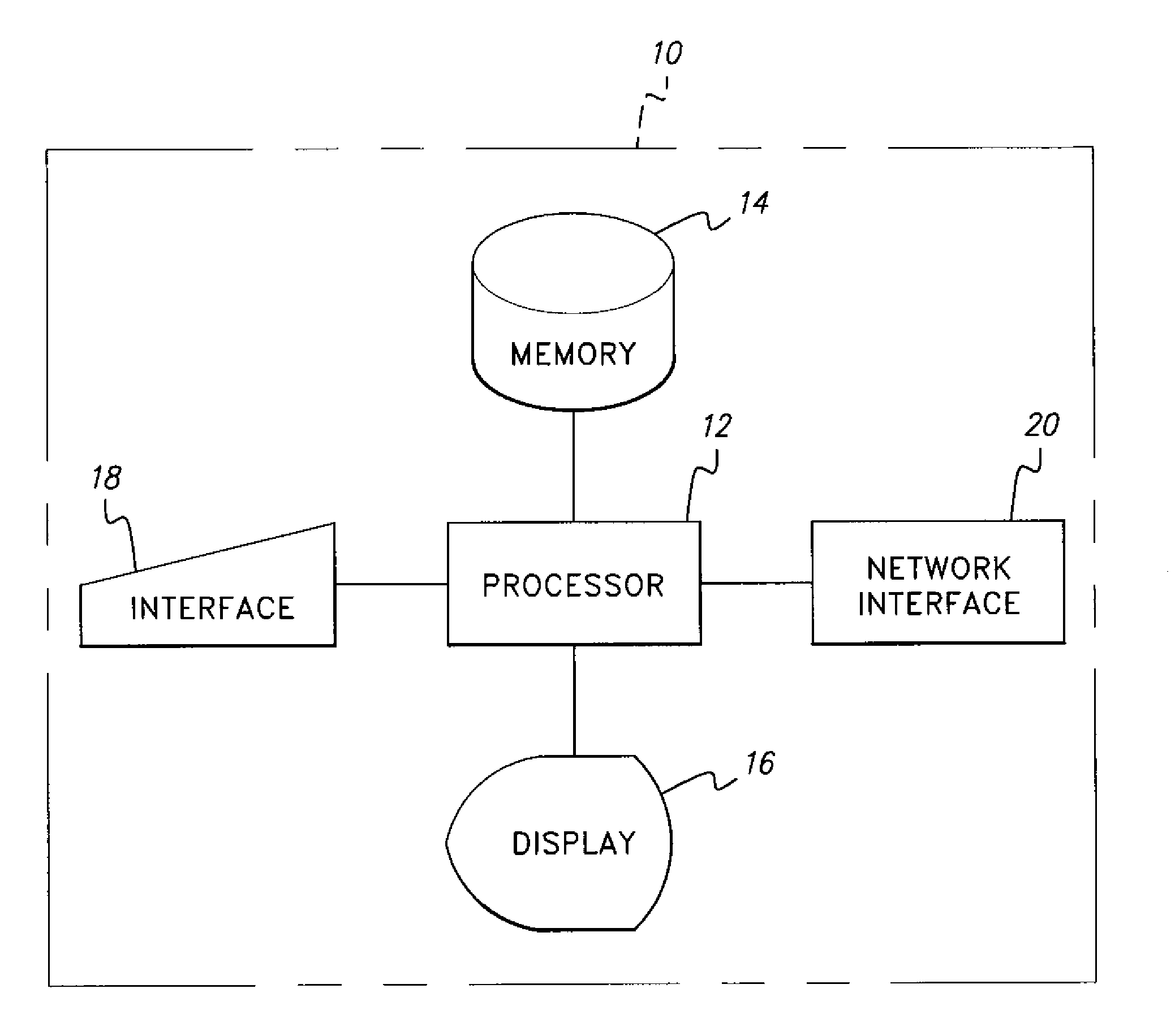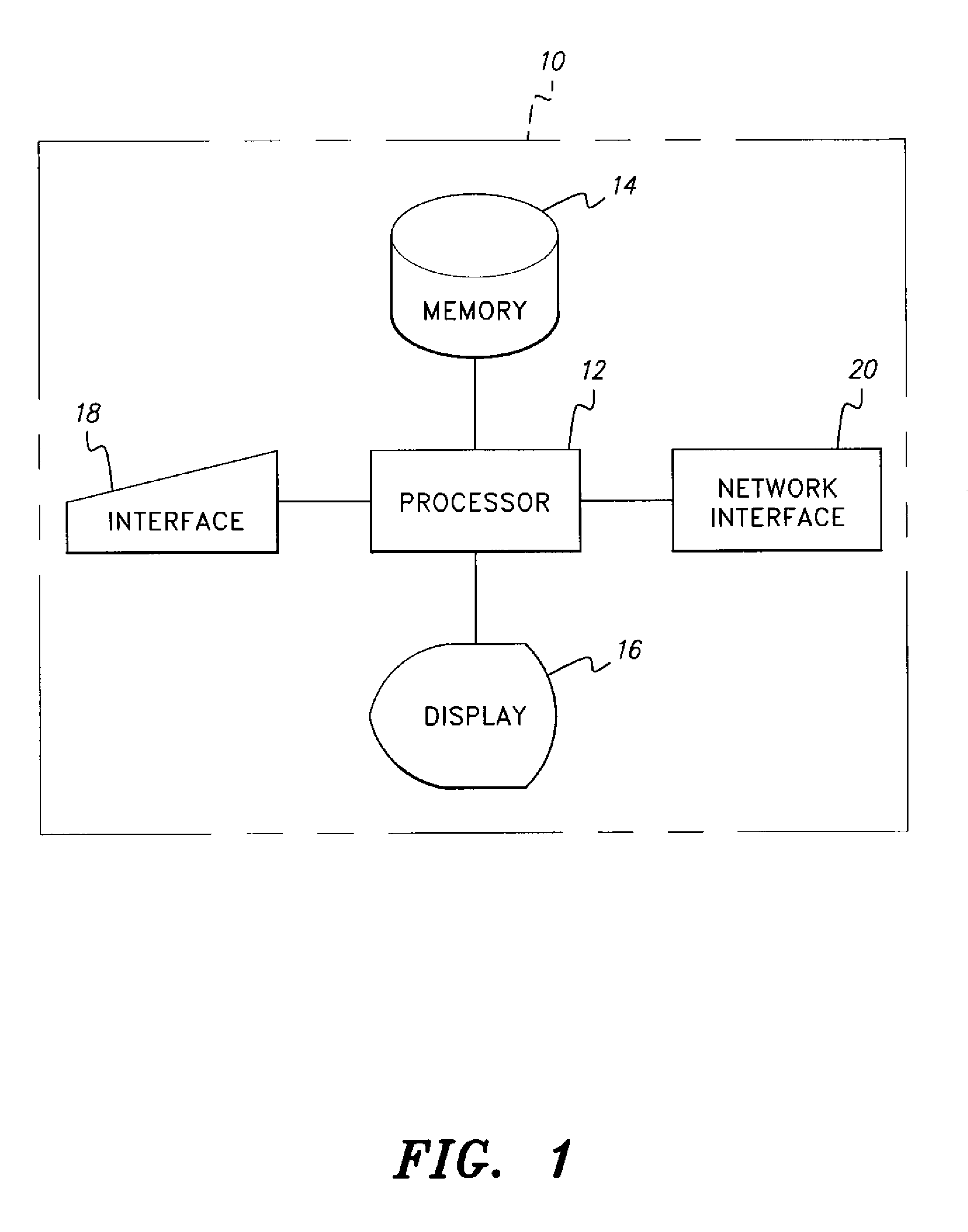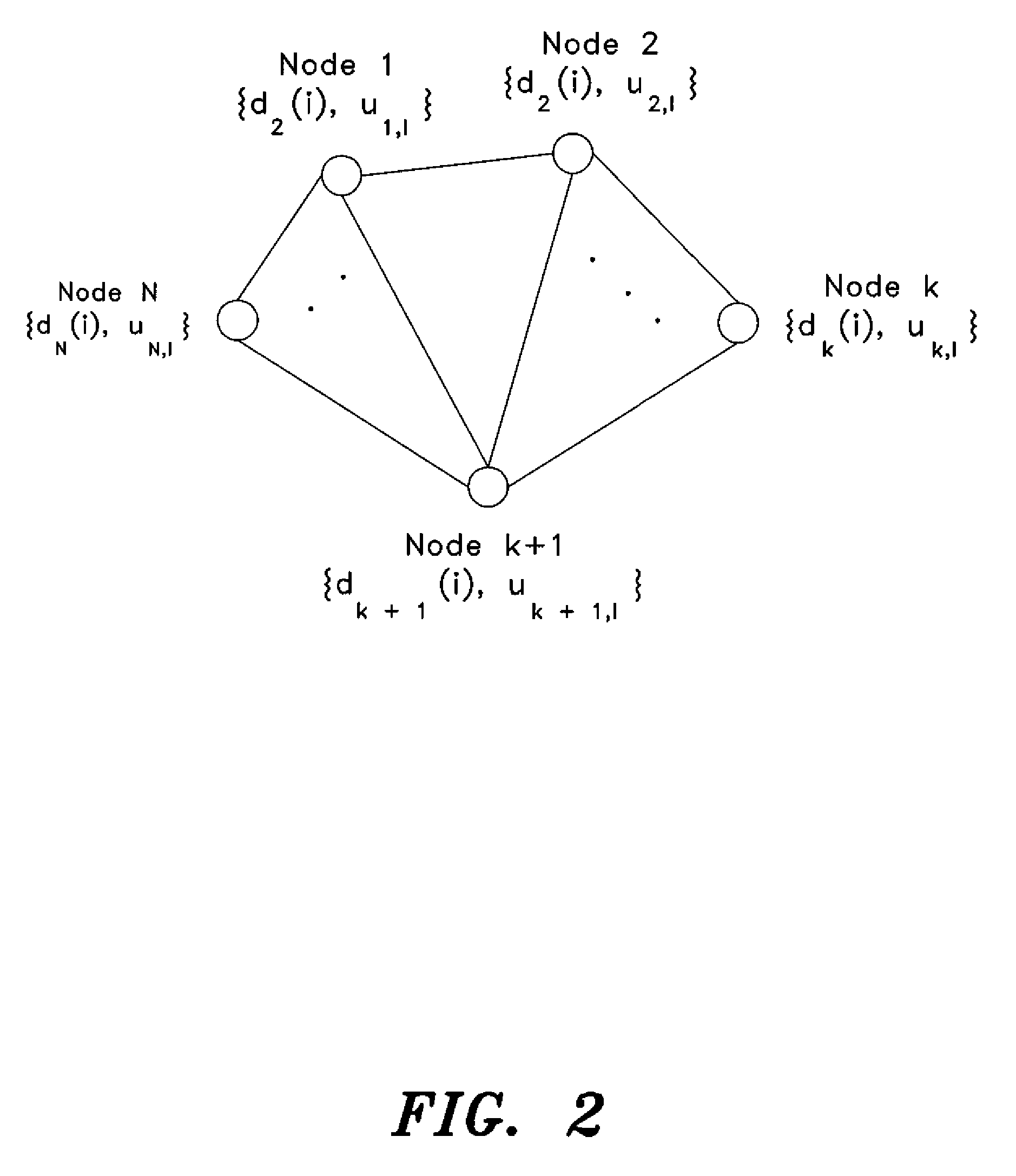Noise-constrained diffusion least mean square method for estimation in adaptive networks
- Summary
- Abstract
- Description
- Claims
- Application Information
AI Technical Summary
Benefits of technology
Problems solved by technology
Method used
Image
Examples
Embodiment Construction
[0029]The noise-constrained diffusion least mean square method for estimation in adaptive networks is based on the Least Mean Squares (LMS) algorithm. The method uses a variable step size in which the step-size variation rule results directly from the noise constraint.
[0030]Assuming knowledge of the additive noise variance σv,k2, the cost function of equation (8) may be modified as follows. The second term in equation (9) goes to zero asymptotically. This means that the problem reduces to minimizing Jk1(w) with respect to w based on the constraint Jk1(w)=σv,k2. The Lagrangian for this problem is given by:
minwkJk′(wk)=Jk1(wk)+∑l∈Nkblkwk-ψl2+γλ(Jk1(wk)-σv,k2)-γλk2,(10)
where the last term is added as a correction term to avoid any spurious behavior. Using the Robbins-Munro algorithm, the adaptive solution now becomes:
wk,i=wk,i-1-μk∂Jk′(wk)∂wk,(11)λk,i=λk,i-1+β∂Jk′(wk)∂λk,i-1.(12)
[0031]Solving the first partial derivative yields:
∂Jk(wk)∂wk=(1+γλk)(Ru,kwk-Rdu,k)+∑l∈Nk / {k}blk(wk-ψl).(13)
S...
PUM
 Login to View More
Login to View More Abstract
Description
Claims
Application Information
 Login to View More
Login to View More - R&D Engineer
- R&D Manager
- IP Professional
- Industry Leading Data Capabilities
- Powerful AI technology
- Patent DNA Extraction
Browse by: Latest US Patents, China's latest patents, Technical Efficacy Thesaurus, Application Domain, Technology Topic, Popular Technical Reports.
© 2024 PatSnap. All rights reserved.Legal|Privacy policy|Modern Slavery Act Transparency Statement|Sitemap|About US| Contact US: help@patsnap.com










